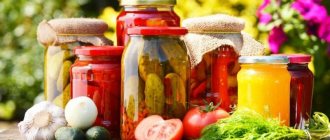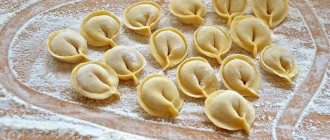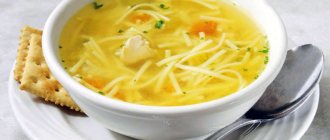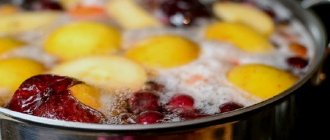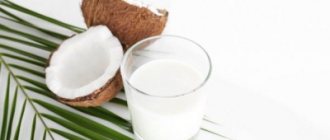It is impossible to imagine a holiday table without salads. Housewives try to diversify the menu by preparing different types of cold dishes. It is advisable not to leave salads after dinner, because this is a perishable product, and if you don’t know what the shelf life of the dish is, you can even get poisoned.
The shelf life of such food is specified in Appendix 1 to SanPiN 2.3.2.1324-03 “Hygienic requirements for shelf life and storage conditions of food products” and GOST R 54703-2011.
Shelf life of Olivier salad
It is known that the deadlines for the sale of cold dishes at catering establishments and retail outlets are short and very strict.
This is due to the fact that violation of established requirements can lead to serious consequences: food poisoning and stomach upsets. At home, housewives also often think about how long salads can be stored and how to properly maintain the quality of food at the highest level.
In order to preserve the Olivier salad for as long as possible and serve it fresh on the table, we recommend that you store all the ingredients separately, not seasoned with mayonnaise. You will always have time to add it to your meal, for example, immediately before a meal, but this approach will significantly extend the storage time.
According to SanPiN standards, the shelf life of Olivier is:
- For Olivier without mayonnaise at a temperature from +2°C to +6°C - 12-18 hours ;
- For Olivier with mayonnaise at temperatures from -2°C to +2°C - 9-12 hours ;
- And only 3-4 hours for the finished Olivier salad, standing on the table at room temperature.
Sea kale salad
Nowadays, seaweed salads are becoming increasingly popular because they are very healthy and contain a lot of iodine. In relation to them, it is worth understanding that the usual shelf life of salads does not apply at all. You just need to carefully follow the recommendations for storage periods and rules indicated on the packaging. However, once opened, the salad is best eaten within a couple of days.
But if you decide to prepare this dish yourself from dried seaweed, then it must be stored for no more than 3 months at a temperature of 3-4 degrees.
Shelf life of salad “Herring under a fur coat”
What would New Year be without our beloved herring under a fur coat? When storing this type of salad, it is necessary to clearly distinguish how it was prepared: factory-made or at home.
Please note that if you read on the packaging label that the salad is suitable for consumption within 10 days, it most likely included a special preservative additive called “Antibac”. Usually in this case you will not find an ingredient like boiled eggs in its composition.
- If you make your own salad, the shelf life of the product will be no more than 2-3 days ;
- If you purchased “Herring under a fur coat” in a store , due to the factory vacuum packaging, the shelf life will be slightly longer - from 4 to 5 days ;
- Salad bought in bulk can be stored for no more than a day .
Frozen storage
In principle, it is possible to store a salad with mayonnaise in the freezer, but after defrosting it will not change for the better. The sauce will separate into its components, and other components will lose their original structure and taste.
If freezing the salad is necessary, place it in a bag or container. Then remove as much air as possible from it and store frozen for 1 month.
Storing Olivier salad
This dish can be stored:
- no more than 18 hours from the moment of its preparation in a seasoned form;
- no more than 24 unfilled, exclusively on the refrigerator shelf.
Crab stick salad
The classic version of the dish includes eggs, crab sticks, canned corn and a fairly large amount of mayonnaise. Due to the presence of ingredients with a short shelf life:
- the dressed salad should be consumed within 48 hours;
- An unseasoned dish can be stored in a cold place for 3 days.
Mimosa salad
Due to the peculiarities of its preparation, the shelf life of mimosa salad is no more than a day. It can only be stored tightly closed.
Herring under a Fur Coat
The combination of a large number of products with a short shelf life significantly reduces the freshness time of this dish. It is consumed within 12 hours after refueling, otherwise there may also be a risk of poisoning by fish toxins.
In a refrigerator
The duration of storage is influenced by the type and quality of ingredients used, the presence of dressing, temperature and light conditions, and humidity level.
According to SanPiN standards, salads prepared in catering establishments must be sold within 30 minutes, and those sold in a hypermarket are stored for no more than 12 hours at a temperature of 4 ± 2 °C.
A self-prepared cold dish is most often placed in the refrigerator for a period of 6 to 48 hours, depending on the composition.
Refueled
The filling is of great importance in determining the maximum shelf life of the mixture. The most popular include:
- Vegetable oil (sunflower and olive);
- Mayonnaise;
- Sour cream, yogurt;
- A variety of sauces (“Caesar”, “Pesto”, “Thousand Islands” and others).
The most short-lived dressings are those based on fermented milk: they begin to deteriorate after 60-90 minutes. Salad dressed with oil will last in the refrigerator for 12 hours.
The use of mayonnaise and various sauces with the addition of preservatives allows you to preserve nutritional value for 24 hours. Over time, the taste of food deteriorates.
No refill
According to sanitary standards, undressed salads are stored longer: approximately from 18 to 36 hours, taking into account the ingredients they contain.
As a general rule, it is recommended to add the sauce no earlier than 30 minutes before serving. If it is not possible to prepare a cold appetizer immediately before a meal, it is recommended to cut the ingredients and place them in separate containers rather than mix them. Glass and plastic sealed containers are ideal for this purpose.
Mayonnaise dressing
Mayonnaise has a longer shelf life, but it is still quite small and does not exceed 6 hours. Of course, now this shelf life is practically not observed anywhere, since salad with mayonnaise can be stored longer without any harm to the body, but the dish will lose its taste quite quickly. Moreover, even nutritionists agree that for salads it is best to use a store-bought product, which, although not as high quality as home-made mayonnaise, has a longer shelf life due to preservatives.
At room temperature
If for some reason you cannot use the refrigerator to place the food, then you can store it at room temperature. Of course, the shelf life will be reduced significantly, namely:
- Mayonnaise - from 3 to 5 hours.
- With sour cream – 30-45 minutes.
- With vegetable oils – 2-3 hours.
- Containing fresh vegetables and fruits - up to 120 minutes (it is recommended to consume immediately, since these components very quickly lose moisture, and then their appearance and taste).
It is best to place the dish in a porcelain or glass bowl, cover with a lid and place in the coolest, darkest place in the apartment (in winter, on a balcony, window, etc.).
How long and how can you store salad with mayonnaise, sour cream, olive oil?
Despite the fact that on average the shelf life of salads with different dressings is approximately the same, some points may affect how much and where to store the product:
- Sour cream, even natural, begins to sour after half an hour at room temperature. In the refrigerator this period does not increase much. For this reason, Olivier salad, herring under a fur coat, and even fresh vegetables can be seasoned with this ingredient only after the preparation has been laid out on plates. Whatever the consumption period is indicated on the product packaging, after opening the container it is reduced to 6-10 hours, and when transferring the sauce to a new container - to 3 hours.
- In the case of mayonnaise, the time period increases slightly, but still does not amount to more than 6 hours. The mass can be stored longer without risk to health, but its taste properties will noticeably suffer.
Advice: Even professional chefs and nutritionists believe that it is more correct to use ready-made mayonnaise with preservatives for dressing salads, rather than a natural homemade product. This will slightly extend the storage time of Olivier or herring under a fur coat.
- Olive and other unrefined vegetable oils are good preservatives, but not in the case of salads. By reacting with the chemical components of the components, such dressings only accelerate the process of their destruction. It is generally not recommended to store salads dressed with sauces based on vegetable oils. It is better not to keep them at room temperature for longer than 1-2 hours.
To assess the quality of the salad, you need to inspect it and move it to one side of the container. If the appearance, smell and texture have not changed, and liquid has not appeared on the vacated part of the container, the dish can be tasted and served.
In the freezer
Not all components can survive freezing. For example, fresh vegetables (cucumbers, tomatoes, avocados) lose their elasticity and become limp after defrosting. Only boiled vegetables, meat and fish should be placed in the freezer. For this:
- cut all the ingredients, put them in a vacuum bag, evenly distributing the pieces over its entire area (separate storage of ingredients is allowed). Sealed packaging will protect the contents from foreign odors.
- Do not add spices or dressing.
- Enter the date and time.
This mixture will keep in the freezer for about a month.
To defrost, place the bag in the refrigerator for 120 minutes and then place it at room temperature. Liquid may form during defrosting and must be drained.
Freezing always degrades the taste of food - remember this.
Temperature for serving second courses
This process requires compliance with established standards. It is imperative to maintain the correct temperature for serving food, its serving, conditions and shelf life of finished products. According to SanPiN, the serving temperature for second courses should not be lower than 65 degrees.
Serving is allowed both in ordinary plates, bowls, dishes, and in multi-serving dishes. Depending on the products used, as well as the consistency and cooking technology, the serving option changes. For example, dishes without sauce are served on a preheated ceramic plate at a temperature of 65-70 degrees Celsius. Dishes with sauce are served in metal dishes at a temperature of 75-80 degrees.
There are special rules for serving dishes, depending on the set of products included in their composition. Serving of fish, meat and vegetable hot dishes is carried out according to established standards. The table must be set with cutlery and utensils intended for serving each type of food. Depending on the cooking recipe, you should correctly select the containers in which the food is offered to guests.
- Fried meat is served on a cupronickel plate along with a side dish. A heated dinner plate is placed under the main dish. Meat cooked in a whole piece should have a temperature of 65-70 degrees, while the temperature of the side dish is permissible up to 60 degrees.
- Beef Stroganoff is usually served directly in a frying pan or under a round “lamb”. The side dish is served separately from the main dish, as is the additional sauce.
- The rules for serving shish kebab require the dish to be presented on an oval metal plate. Pieces of meat must be removed from the skewer onto a heated ceramic plate. A side dish of vegetables is served in a salad bowl, the sauce is served in a ceramic gravy boat. The shish kebab is brought to the table directly from the grill, its temperature should not be lower than 80 degrees.
- Cutlets, meatballs and minced meat dishes, in accordance with the norms, are served on a small dinner plate, preheated. Depending on the recipe, the side dish can be placed either on the main plate or on an additional one.
- Roasted poultry must be presented on an oval-shaped metal dish; croutons are used as a pillow for the meat. Place the bird in portions on a small dinner plate along with a hot side dish.
In some cases, ceramic pots are used to serve meat dishes. Then it should be taken into account that the temperature of the dish should not be less than 90 degrees.
The rules for serving second hot fish courses have several important differences. They are also served in metal dishes, portioned frying pans, “lambs”, on small dining and snack plates. Boiled fish must be presented on a large platter along with a side dish of vegetables. Next, the fish is transferred in portions to a heated dinner plate. Cold sauce is served separately.
Baked fish fillet must be served in a frying pan along with a side dish. Fresh vegetables are placed on the snack plate. The sauce boat should be brought to the table on a small pie plate along with a teaspoon. Fried fish, according to SanPiN requirements, is served in heated dinner plates. The side dish is in a ceramic salad bowl.
When serving fish dishes, it is important to maintain the required temperature conditions. So, dishes from boiled or steamed fish are served at a temperature of 65-75 degrees, for baked fish you need to provide 70-80 degrees. Boneless fillets can be served at a temperature threshold of 90 degrees.
By type
Meat
“Chicken Caesar”, “Capital”, “Monomakh’s Hat”, “Men’s Dreams”, “Tiffany” contain meat products that increase the risk of proliferation of pathogenic microorganisms.
The shelf life in this regard will be no more than 2 days.
Fish
Salads “Mimosa”, with crab sticks, with squid and egg, with shrimp, with tuna and cod liver will retain their nutritional value for 2 days (without sauce). Store dishes containing fresh or lightly salted fish with caution.
Vegetables
Cuts from fresh vegetables (Greek, brush, asparagus, etc.) are usually not stored, so this snack must be eaten immediately or within the next 12 hours.
Dishes with the addition of natural preservatives (vinegar, onion, salt, spices, for example, for Korean carrots, vitamin or chuka salad with the addition of funchose, seaweed) will last at a temperature of 4 ± 2 ° C for 2-3 days. If we are talking about boiled vegetables (beetroot, vinaigrette, beets with garlic), then the organoleptic properties will remain throughout the day.
With mushrooms
When storing mushroom salads, keep in mind that using home-canned food increases the risk of contracting botulism. Place in the refrigerator for no longer than a day. Add fried or boiled champignons, oyster mushrooms and porcini mushrooms last.
Fruit
According to GOST and sanitary rules, fresh fruit salad cannot be stored.
If we are talking about adding, for example, canned pineapples or green apples as an ingredient, then you should focus on general standards. Adding lemon juice will help prevent sweet fruits from darkening.
Features of storing vegetable and fruit salads
Salads made from fresh fruits or vegetables are stored the least. Ideally, they should be consumed immediately after preparation. Despite this, there are several nuances, the observance of which will slightly extend the freshness of the components:
- You can cook only from thoroughly dried ingredients without the slightest sign of moisture. The mixing container and tools must also be completely dry and cool.
- Ingredients such as boiled eggs and various preservatives should be added to the dish last, just before serving. They need to be cut quite large.
- If there is a need to hold the finished dish for a short time, it is recommended to line its bottom with a paper towel. The finished composition also needs to be covered with a paper product and pressed lightly to the surface. Then wrap the container in film and cover with a lid.
- The dressing can also be prepared in advance, but it will have to be stored in an airtight container.
- If the time of consumption is delayed, then the salad container must be checked every three hours. We change wet towels and mix the ingredients.
- In the case of fruit, it is recommended to first place each component in a colander to allow excess juice to drain.
- Sliced apples, pears and other ingredients prone to browning should be sprinkled with citrus juice. This will not only preserve their attractive appearance, but also add a subtle aroma.
- The dish will have a nice and crisp texture if the ingredients (fruits or vegetables) are first soaked for a few minutes in ice water.
Following the recommendations for preparing fruit and vegetable salads allows you to increase their shelf life from several hours to 5-7 days without the risk of loss of taste.
How to determine delay
Here are some tips for identifying an expired product:
- When purchasing in a store, pay attention to the tightness of the packaging, production date, and temperature conditions.
- Evaluate the appearance and aroma. If there is a sharp and unpleasant odor, and the mixture of components is unsightly: with signs of weathering, similar to a soggy substance, refrain from using it.
- If mold is suspected, discard food immediately.
- A rancid or sour taste indicates the beginning of the inevitable process of decomposition of the ingredients.
Signs of a spoiled salad
So, the holiday is over, and the next day you take out from the refrigerator everything that was not eaten yesterday, including salad dressed with mayonnaise. Smell it. We tried it. Everything seems to be in order, you can eat. But it is not always the case.
Although the dish does not look and taste spoiled, after 24 hours bacteria have already begun to multiply in it. They are the ones that can cause, at a minimum, indigestion, and at a maximum, poisoning. Such residues are especially dangerous for children and the elderly.
Advice. To check the freshness of the salad, push it to the side with a spoon. If there is liquid left at the bottom, it is no longer worth eating.
Spoiled mayonnaise differs from fresh mayonnaise in appearance. A yellowed top layer indicates that the sauce has separated and deteriorated.
Recommendations
- Try to cook as needed and eat immediately after preparing food.
- Use only fresh products with current expiration date.
- Add the dressing only before serving.
- Follow the recipe when cooking.
- Avoid re-freezing.
- Store in a glass or plastic container with a lid, taking into account the product's proximity. Do not place in an aluminum pan: this will cause a chemical oxidation reaction that will speed up the spoilage of the dish.
- Remember that the greatest risk of food poisoning comes from raw, uncooked ingredients.
- The components should not be mixed in advance. It is optimal to place in different containers and put in the refrigerator.
Growing lettuce in the work area
The growing season of lettuce in the working area is 22–25 days. Recommended temperature: during the day with light – 20–24°С, at night – 18–19°С. The substrate temperature is not lower than 19°C. The temperature of the nutrient solution is 18–19°C. Relative air humidity – 70–75%.
At lower solution temperatures, there is a danger of plants being damaged by pythium root rot. During the summer, you need to pay special attention to the following points:
• High air temperature will lead to stretching of plants, failure to bloom, necrosis; • High temperature of the solution will lead to the death of roots as a result of oxygen starvation; • Sharp fluctuations in humidity will lead to necrosis and the development of fungi of the genus Pitium.
Water quality is very important in hydroponic culture.
If it contains a lot of carbonates, then this must be taken into account when calculating the solution.
Unified nutrient solution (standard) for all vegetable crops mmol/l:
– NO3 18–22; NН4 0.3–1.0; K 6–7; P 1.25–1.5; Ca 4.5–4.7; Mg 1.5–1.95; SO4 2.75–3.0; – µmol/l: Fe 20–25; Mn 10; B 35; Cu 0.75–0.9; Mo 3.5–5.0; – pH 5.6–6.2; Ec 2.0–2.5 mS/cm.
You can experiment with the ratio of different nutrients, but not with the ratio of nitrogen to potassium. It's standard. We tried both 2:4 and 2:6, but the salad does not become better, more compact, and fertilizer consumption occurs. You can take a ratio of up to 2:4, but no more. The potassium to calcium ratio is also very important. Optimal: K/Ca 3.5:1 in winter and 2.5:1 in summer (especially for red salads).
Salad before 3 pm should get everything! You may sometimes see a drop of moisture on the edges of the leaves. This means that the salad has already received the maximum that it needs for today - nutrition, lighting - and now it “wants to sleep.” If this does not happen, it means that the plants did not receive enough of something.
Requirements for serving main courses
Before bringing main courses to the table, used dishes and cutlery are removed (washed). If a common dish is served and then divided into portions, take it out in a large container. Place heated dinner plates in front of the guests and divide the dish into portions. The same rules apply for serving side dishes. The pre-prepared dish is brought out in its entirety for display, after which it is divided into portions in the kitchen.
Dishes in frying pans are placed on warm snack plates, directly in front of the guests. Additionally, hot sauces are served in metal sauce boats, or chilled in small plates or special bowls. The requirements for serving second hot courses include compliance with the temperature regime, which may vary, depending on the recipe of the dish, the ingredients included in it and the classification of the establishment.
Dessert
Before serving sweets and drinks, remove all utensils and utensils from previous dishes. Hot desserts are served in metal dishes or ceramic dessert plates. For cold dishes, all kinds of bowls, cups, and bowls are used. The serving temperature for hot desserts, in accordance with the rules, should not exceed 75 degrees, and for cold dishes the permissible temperature is 10 degrees.
In addition to desserts, sweet sauces, jams, pastry creams, and chocolate icing are often served. For liquid hot products, metal or porcelain gravy boats are used. Cream and milk are served in jugs, jams and jams are served on a portion or pie plate.
Requirements for filing first
The serving temperature of first and second courses is an important factor that catering establishments must take into account. Let's look at what rules exist for the first one. The standards stipulate that clear broths and soups are served in special cups and bowls, which are placed on plates. Croutons, pies, and bread are served separately on a pie or snack plate.
Puree soups must be presented in ceramic bowls. At the same time, it is allowed to decorate them with herbs and croutons directly in portioned dishes. Dressing soups and borscht should be served in a classic deep plate; additionally, chopped greens can be served in a small salad bowl, and sour cream can be served in a porcelain gravy boat. A prerequisite for serving hot first courses is heated dishes and a temperature of at least 70 degrees.
Hot vegetable dishes
Unlike meat and fish, vegetables should not be served on metal dishes. An exception is made only for a portioned frying pan, in which you can serve baked or fried vegetables as an independent dish. For hot vegetable side dishes, table and snack plates are used, less often ceramic salad bowls. The dishes must be heated immediately before serving.
Hot and cold sauces are served separately with vegetable dishes in porcelain sauce boats. Complex multi-portioned dishes are served on large communal plates and then served individually, placing warm dishes on the dining room or snack bar. The serving temperature for main courses and side dishes of vegetables should not be lower than 65-70 degrees. In high-level establishments, a temperature regime of 75-85 degrees is required.
Sequence of serving dishes
There is a certain order according to which dishes are brought to the table. Cold appetizers must be served first. These can be vegetable salads, assorted meats or fish, and caviar. Hot snacks are served immediately after cold ones or together with them.
The next stage of serving is the first courses. Additionally, they bring out bread, pies, pies, and croutons. Chopped greens are offered in small plates, sour cream or cream - in gravy boats or serving jugs. After serving the first courses, dirty dishes are removed, cutlery is replaced, and the table is additionally set.
The range of second courses is varied. Depending on the food offered to guests, different utensils may be used. Differences in supply temperature are also allowed. After the main courses, they move on to serving desserts and drinks. There are also rules that must be followed.
NFT: these three letters hide the name and secrets of the world-famous technology - nutrient film technology. NFT is a method of growing plants without soil in special trenches through which a nutrient solution continuously flows. The precise dosage of current in the nutrient solution creates an extremely thin flowing layer, saturated with oxygen and containing all the nutrients the plant needs. Using this technology, you can grow all green vegetables, including strawberries, peppers, eggplant, cucumbers and tomatoes.This system consists of the following components:
1.Work tables with gutters through which the solution flows
2.Drain pipe through which the solution flows from the gutters into the drain tank
3. Drain tank, it collects the solution from all work tables, with a submersible pump for returning the nutrient solution to the main tank. In a greenhouse of 400 m2 (38 work tables) there was a tank of 80 liters.
4. The main tank with a submersible pump, from which a nutrient solution is supplied (located in the technical area)
5. 2 pcs. 50l tank with concentrated nutrient solution + 2 devices for monitoring pH and Ec
Someone installs a mortar unit with sensors; from personal experience, even on S of 3500 m2 you can easily get by with hand-held devices, saving a lot on these units. Submersible pumps should (according to the rules) be of the same power, again from experience, a more powerful pump was installed in the drain tank. The best are the Italian “Kolpeda”, there were all sorts: from German (famous brand) to American...
Agricultural technology of salad line technology.
1. Substrate and seedlings . Basic requirements for the substrate: they must be chemically inert, stable, clean, well permeable to water, and have good water-holding capacity. Perlite obtained from volcanic rock meets these criteria. The salad substrate consists of peat and pelite. Many recommend a ratio of 2...3: 1 and also recommend using agroperlite, which has a larger fraction.
The substrate in pots is almost entirely perlite.
I tested it, even before these recommendations, in the last century, it is best to use a ratio of 1:2, i.e. there is 2 times more perlite and peat in this case is used only as a binder. In this case, perlite sand is taken; with peat, a more homogeneous mass will be obtained. Why exactly this ratio? The basis of your salad line turnover depends on the seedlings and the faster the seedlings develop roots, the faster they can be put on display. At one time, I was able to place seedlings on the work tables already on the 5-6th day, which means the plant begins to develop earlier and better. The main general task is to fit within the time interval of 30-32 days, from planting to harvesting, in winter and 21-25 days in spring-autumn.
1998 SPK collective farm "Krasnaya Niva". The film creates a greenhouse effect.
The seedling tables underneath the cassettes will be lined with PE film, protecting the root from the cooler air from below. The seeds are not embedded in the substrate, but are sown on top of a moist substrate and covered with spunbond (suf 32) for 2-3 days, thus creating a greenhouse effect. They water with plain water, not a working solution, although the latter was recommended by foreigners, but this did not quite turn out to be what we needed. A working solution with a full set of nutrients does not contribute to the growth of roots of the required size. In addition to accelerated rooting of seedlings, there is a real opportunity to abandon 2/3 of seedling tables and replace them with working ones, which will increase production yield.
2002 “Agrocomplex “Angelovo”. The seedling tables are covered on top with agrotex (suf, spunbond), the bottom is lined with film. Sprinklers are visible above the tables.
Water the seedlings only with finely dispersed nozzles; if the area is small, then a regular backpack sprayer can do the job.
To save money, ordinary seeds are sown; it is more convenient to work with pelleted ones. There are one or two pieces per cup, then when sorting the cassettes the weaker one will be removed. What you can see in stores now, the quality is wrong. Let me explain: what many saw for THREE seeds in the late 90s was explained simply - there were not enough work tables for a continuous cycle, therefore, in order to reduce the gap between the last harvest and the new harvest, such a “trick” was performed with three seeds in a cup. Visually it was a large mass of greens, really a small bunch of elongated lettuce. By the way, if you are already copying the “bad taste” with three seeds, then repeat it verbatim - for accelerated distillation with exactly this amount, our “Azart” variety salad is ideal. It grows very quickly and produces a good volume of leaf blades. The standard weight of salad with a glass is 250-280 g. After the salad line was fully installed and there were no production failures, the need for such a “trick” disappeared, which, unfortunately, has taken root in many farms.
Here is a salad from one seed, 25 days (February). This is how it should be, and not the misunderstanding that is sold in stores under the guise of a high-quality salad.
Attention ! I’m not judging anyone, I’m just writing HOW it should be CORRECT, and how you grow or are growing is everyone’s personal business.
2.Temperature and light conditions.
To obtain a conditioned salad, you need to adhere to a certain temperature regime. This is not a secret for specialists, but with the help of temperature you can speed it up. and stop the development of plants. By increasing the temperature, you can get the lettuce to grow quickly, with very controversial conditions, it will simply stretch out. There must be a difference between day and night temperatures of at least 3-5 degrees.
Heating of the salad line should be exclusively on the side and top registers, no heaters under the work tables.
Day +20ºС - +23ºС on a sunny day, Night +16ºС - + 18ºС
Day +18ºС - +20ºС on a cloudy day, Night +12ºС -+15ºС
Also keep in mind that when additional lighting is turned on, the temperature in the greenhouse increases by 2-4 degrees.
The temperature of the working solution water is not heated under any conditions; it is maintained by itself as it flows through the gutters and cools by evaporation.
*** Artificial lighting (additional lighting)
We use additional lighting only in the winter months.
“For artificial lighting in greenhouses, high-pressure sodium lamps are especially recommended as a supplement to daylight. "(Professor, Dr. Helmut Krug, “Vegetable Growing” [page 162], Hannover, Germany; Russian translation of the publication “Kolos” 2000)
When choosing lamps you need to be guided by the basic requirements:
- lighting area
- possible suspension height
- price (cost)
- PAR
* photosynthesis is directly related to the photon intensity of lighting and is in the range of 400-700 nm (photosynthetically active radiation - PAR, corresponding to the approximately visible region) Therefore, the most effective lamps are those with the highest photon output, and therefore light and irradiation. Such sources include high-pressure sodium lamps (HPS), high-pressure halogen lamps, with a spectrum of 485 - 720 nm, i.e. similar to daylight (presence of a high proportion of blue light). Similar low-pressure lamps with a purely yellow spectrum (589 nm) are not suitable; they adversely affect growth.
The introduction to the basic requirements of PAR, as well as the adoption of GOST R 57671-2017, is associated with a sharp increase in the production and supply of LED lamps and the establishment of order in the market. It is enough to read GOST carefully to understand that these lamps do not offer anything special, and GOST only shows how to correctly determine the spectrum, etc. There are no conditions or statements that LED lamps with this GOST are suitable exclusively for greenhouses; it allows their use. There is a whole section which GOSTs these lamps must comply with, as well as a formula for calculating the PAR of these lamps.
Therefore, replacing HPS lamps with others does not make sense, since today the advantage in the price-quality ratio remains with HPS lamps. In 2022 and early 2022, experiments were conducted on the use of LED lamps under conditions of full artificial lighting. LED lamps have one advantage - a lower height of the suspension above the plants; accordingly, more tiers can be placed in height (when organizing urban farms)
Full spectrum LED lamps
This is a lot of lettuce in 29 days. Outgrown by 4 days.
Here he is handsome)))) The same rule - One glass - one seed. In the photo below there is a difference of 20 years, the experience has not gone away, no one has learned better... All three photos are from the month of January 2022.
An example of the loss of luminous flux with the same lamp suspension height.
LED lamp
Plasma lamp (more used in floodlights for illuminating a large area)
— Energy saving
— DNAT
* Lamp suspension height - the higher the suspension height, the more uniform the lighting, but the light losses are much higher.
How to calculate the number of lamps for a greenhouse? There are two ways: look at your neighbor and do it yourself, or use the calculation formula according to SanPiN. Calculation according to SanPiN, oddly enough, gives a very accurate number of lamps, the only thing you need to know or have an idea is how much luminous flux is needed to provide light (PAR), the coefficients of the ceiling height (suspension) of lamps are also used in the formula:
Luminous flux (in lux) = amount of light in lux · room S · lamp height coefficient
Example: Greenhouse 250 m², planned hanging height 2.6 m, required for normal R&R of plants is 10,000 lux. Coefficient for heights up to 2.7 m - 1
Sp (luminous flux) = 250 * 10000*1 We get = 2500000 lux or 2500kl. We divide by the radiation power of the lamp (take HPS 400 = 35,000 lm) We get 71.5 (72) lamps per greenhouse or 4 lamps above one work table at a height of 2.6 m. In the economy version there are 3 lamps, one of them is 600 watts.
This is ideal; in reality, the luminous flux is much less, since the light is not distributed strictly downward, but is also lost to the sides. For a more accurate calculation of how much luminous flux (irradiation intensity) is actually obtained, there is another formula that takes into account only the power of the lamps and the height of the suspension.
Example: Let's take data (truncated) from one resource for agronomists. The width of the table is 2.1 m (standard), the length is 1 m (for ease of calculation), the height of the suspension is 2.7 m for 4 lamps (as they have and many in real life). Task: calculate the efficiency of illumination (photosynthetic power).
In simple terms, the formula looks like this: E = Total source power in (lm): area (m²)
Total: E = 3317.5 lux / m² I think there is no point in being surprised that “dead ones” grow, you can throw 10 seeds in a glass, I saw a “record” of 4 lettuce seeds in a glass, St. Petersburg ones distinguished themselves.
Here is your explanation why, instead of normal lettuce, there is still awkward grass. You can change one lamp for another at least 10 times a day, nothing will change if you don’t have basic knowledge. For some, 18 years was not enough for this. I think I need to post a photo of the “incompetent”, for a clear example (Salad line. Part II - the best producers)
A full day of light for salad is suitable for a total of 16 hours** (for December and January), incl. including supplementary lighting, artificial light must be interrupted by natural light. The total additional lighting is on average 8-9 hours; additional lighting can be divided into equal parts: 4 hours in the morning and 4 hours in the evening. The fact that many plants have light from dawn to dusk is further confirmation that either the specialists are weak or do not know the technology. There is a department of Physiology and Plant Nutrition at the TSHA that will help you figure out exactly why this should be so.
* Lettuce varieties for greenhouse production are day-neutral plants, i.e. and with a day length of 8 hours, you will get a harvest, only it will all stretch out over time.
* From February, additional lighting can be reduced to 4-6 hours, the spectrum of sunlight changes, its intensity increases, at the beginning of March you can no longer turn on the lamps.
The best lamps are Phillips Son-T Agro, the best lamp is Gavita (Holland).
Lamp "Gavita"
Not bad domestic lamps of the ZhSP and RSP series.
Our "RSP-2-400". For 2 lamps 400 W.
Difference: “Gavita” has clear boundaries of a rectangular light spot, while ours have a blurred boundary. The height of hanging lamps on tables is 13-150 cm, this means that over a 4-meter work table, 2 lamps with 400 W lamps are enough, ideally 3 pieces × 400 W or 2 × 600 W. If 2 x 400 W, then on a 4-meter work table the last row of salad will not be quite standard, the temperature there is higher (side heating registers) and darker, therefore the best thing is the last row for parsley or dill, which are less demanding of light. This is exactly the placement of lamps that foreigners use; ours always go their own way; just look at the wild number of mirror lamps almost under the very ridge of the greenhouse. Not only are these serious unnecessary material costs, but also the additional payment per kW is unnecessary.
3.Nutrient solution .
To operate the salad line, 2 tanks ( A and B ) of mineral fertilizer concentrate are prepared. Tank A usually contains complex fertilizer + microelements. You can take ready-made complex ones and adjust them, or you can compose them yourself. From the wide variety of fertilizers, you can always choose those that you like best and that are more convenient for you to work with. I preferred to compile it myself; it turned out to be a somewhat universal NPK ratio of 18:6:19 for many crops, and at one time several types of them grew simultaneously: from lettuce to various Japanese wonders.
Composition of the mother liquor
| 1050 | 210 | |
| KH2PO4 | 425 | 85 |
| KNO3 | 1215 | 243 |
| MgSO4 | 370 | 74 |
| MnSO4 | 2,23 | 4,46 |
| H3BO3 | 6,2 | 1,24 |
| ZnSO4 | 8,6 | 1,72 |
| Na2MoO4 | 0,25 | 0,05 |
| CuSO4 | 0,25 | 0,05 |
| CoCl2 | 0,025 | 0,005 |
| Fe2(SO4)3 | 2,46 | 0,492 |
It is always better to dilute Ca in tank B , which, if added to tank A, will react and precipitate. The ash-colored edge “burn” of lettuce * is a calcium deficiency, observed when certain agricultural practices are aimed at obtaining high yields, i.e. on a sunny day in the spring we add more nitrogen, which leads to very rapid growth, or when it is cloudy, we need to add potassium sulfate (a competitor of calcium ions) to the working solution. Potassium prevents lettuce from stretching and increases stability in low light and low temperatures. In the future, there was only one tank A in operation; tank B was not needed. It’s easier to treat a leaf with calcium once and solve the problem with its deficiency.
* This is also observed at low humidity and high transpiration.
To acidify the working solution there must always be orthophosphoric acid , but not nitric acid. It is orthophosphoric acid that contains easily digestible phosphorus.
According to the technology, the working solution should be changed once every 2 weeks, or once a month is allowed, but the working solution must be completely drained.
Acidity of the working solution pH 6.2-6.5
Electrical conductivity of the solution, Eu : spring - autumn 1.8 - 2.0 mS, winter 2.2-2.4 mS, summer 1.2-1.4 mS. Transition period: December EU 2.0 -2.2 mS, February 2.0-1.8 mS
Agricultural complex "Angelovo", February 03
The whole point of a salad line or “green conveyor” is one thing - you have to sow as much lettuce as you harvest, and all this is done in one day. This is how the continuity of the “green conveyor” is achieved. You can do the cleaning 3 times a week, but the “ golden rule of the salad line ” is the same - as much as you harvest, so much you sow, and the same amount of seedlings you immediately put on the work tables.
State Farm named after " 1st of May"
*Monitoring EC and pH using small hand-held devices is more effective than working with a computer on a solution unit. With the manual, you have to keep daily statistics of indicator measurements; in the evening, when you charged the nutrient solution and in the morning, the difference is recorded. In the morning, simply add the required amount of water to operate the system. Based on the indicators, you can immediately determine when to increase or decrease the concentration of the working solution. It is the same indicators between morning and evening or their insignificant difference that is the main signal for a change in the concentration of the solution in the system. Over the course of about 5 years, I have accumulated a lot of such data on different farms since 1998, and it is very clear from them when it is necessary to change the concentration.
Moreover, a diligent student and a good agronomist know the difference in the nutrition of plants in open and protected ground. So, for this reason, just water is added to the system in the morning, and filling to the standard working solution is carried out in the evening, because at night the process of feeding the salad itself takes place. Running a working solution through the system around the clock is stupid, especially since during the day excess nitrates are washed out of the lettuce and when selecting products for inspection at the SES (Rospotrebnadzor), this product will be as clean as Caesar’s wife. There is a similar technique with cucumbers, all these are old tricks of agronomists.
4. Lettuce varieties. Leafy: Leafly, Ritza, Sally. All salads are of the Lolo Rosa variety. Semi-headed: Berlin yellow, Azart (one of the best). Time does not stand still, the varieties listed are those that have been personally tested; after a considerable time, much has already changed, but many varieties continue to be grown successfully.
5. Calculation of lettuce yield from line area and economic part (not complete).
1) I will show the calculation of product yield using the example of a simple 400 m2 greenhouse. This area will accommodate 19 work tables + 1 seedling. The length of the desktop is 4.2 m, there are 350 cups on the table. 350 × 19= 6650 pieces of lettuce. 6650: 25 (growing season on the table) = 266 pieces can be collected per day.
266×30 (number of days/month)= 7980 pcs/month. This quantity can be removed per month, then you can calculate the output for 2 or 3 times cleaning per week in order to reduce transportation costs.
The selling price without intermediaries will be 30 - 35 rubles / piece (somewhere more expensive, in the summer a little cheaper, because costs are reduced), for direct consumers buying directly in the greenhouse (as one of the options) it is possible for 50 rubles / piece , cheaper than in stores. 7980 × 30 rubles = 239,400 thousand rubles per month.
Further expenses: the “heaviest” are transport and payment for electricity = 25 -30%, cups, packaging, peat, seeds - the total will be approximately 5-7 thousand rubles (if the seeds are coated), with ordinary seeds - 2-3 thousand . rub.
* In the first option, the product yield is calculated without taking into account the % of losses.
2) This payback table for the customer (S = 400 m². Moscow region 2018).
According to the technical specifications, there is no gas and it is impossible to install a gas holder (near the heating center), the heating is wood.
The land for the project is leased, so the cost of 1 kW/h is determined by the owner.
* Selling prices are shown for small wholesale consumers. In fact, the optimal selling price is 28-30 rubles, the payback period of the project is 1 year, when selling products to the end consumer (bypassing the distribution network in any form) - 4 months. The higher selling price is explained by the high quality of the products in comparison with other manufacturers (there is a review of the quality of products from different manufacturers in Part 2). The consumer is willing to pay reasonable money for a good product, especially when there is something to compare with.
** The difference in the hours of additional illumination of the salad is explained simply - in the first option it is the best (section Artificial lighting), in the second - everything is solely due to the tenant’s savings.
Conclusion: a 200 m2 greenhouse, although small, is a very good option for a family or small business. As an additional income, it is quite possible to hunt onions under the tables for feathering in boxes with sawdust. With an area of 700 m2 or more there is already a serious turnover.
PS The first salad lines encountered certain difficulties during certification; there was no regulatory documentation in Russia. Since during the USSR lettuce was considered an additional crop, it was the main crop in the southern republics and Belarus. Many scientific institutes, departments and the Ministry of Agriculture of the Russian Federation took part in the development of regulatory documentation. Unfortunately, due to the lost time for development, the government soon adopted a package of documents that allowed each legal entity to register technical specifications of their own composition. without proper control over the content of specifications. For this reason, many identical products do not look as they should, there is no single document.
Although the technical specification for the salad line was developed by a commercial structure, it was with the active participation of state scientific structures.
Continued in Part II. Review of salad from different manufacturers.
Community on VK - https:// vk.com/salad line
Requirements for serving food and drinks
In order for visitors to get maximum pleasure from their order, it is important to observe the temperature conditions for serving food in public catering and use dishes that are appropriate for the occasion. The same applies to drinks that reveal their unique aroma and taste when certain conditions are met. For example, rose and white wine should be chilled to +11°C.
Temperature for serving first courses in catering:
- for hot ones – +75-90°C;
- for cold ones – +12-14°C.
Main courses are often served hot. Interestingly, their temperature can vary depending on the type of establishment. In a cafe, canteen or snack bar the norm is +65-70°C, and in restaurants – +80-90°C. It is also important to note that in order to better preserve the required temperature of a hot dish, it is served in heated dishes.
